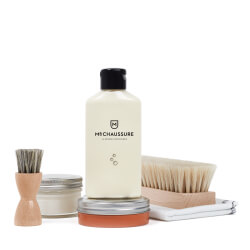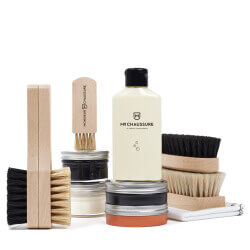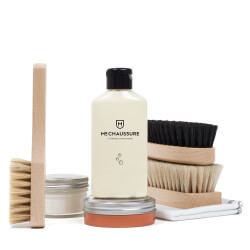Tanning: everything you need to know
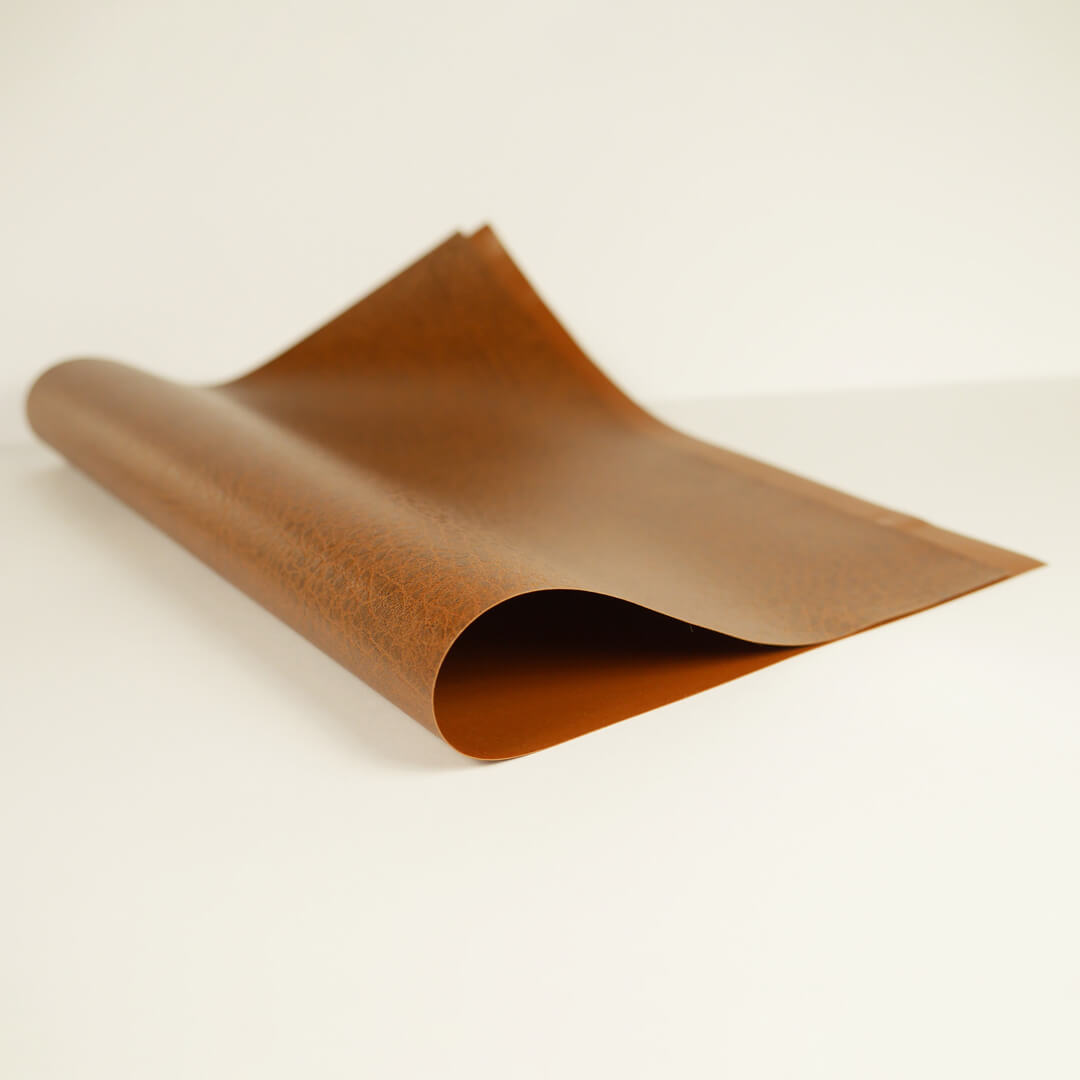
Summary
History of leather tanning What is a tannery? What is leather tanning? But why do we need to tan hides? Mineral tanning, the most common. Vegetable tanning, the oldest in the world Synthetic tannins Friend or Enemy? The tanning process The river work by the tanner Leather tanning Leather processing The finishing of the leather Environmental impact Evolution of the leather industry Labels in the leather industry Leather recycling Products used
History of leather tanning
Using animal skins has always been part of human life. Originally, in prehistoric times, it was used to cover oneself or to create a living space.
Tanning appeared during the Neanderthal period. He used smoke to try to preserve the skins as long as possible.
With evolution, tanning is found in several civilisations. It was not until the 12th century that tanning became a profession. In the cities, districts were formed around the leather trades. This is how tanning methods evolved into the ones we know today.
In the 20th century, tanneries became more democratic. This industry created a new economic dynamic: the small or family tanneries disappeared in the face of the rise of the large tanning industries.
What is a tannery?
It is a workshop where tanning takes place. Animal skins are treated to make leather. Every tannery has its own speciality and method.
There is a difference between tanneries and tanneries. Tanneries mainly work with cattle, calf or horse hides.
For small skins we speak of a tannery. Small skins are sheep skins, i.e. lamb, sheep and goat skins. They are also used in the world of footwear, gloves and clothing.
Their name comes from the ancient term "megis". It refers to the baths of water, salt and ashes. These baths are used to soak the hides in order to achieve tanning.
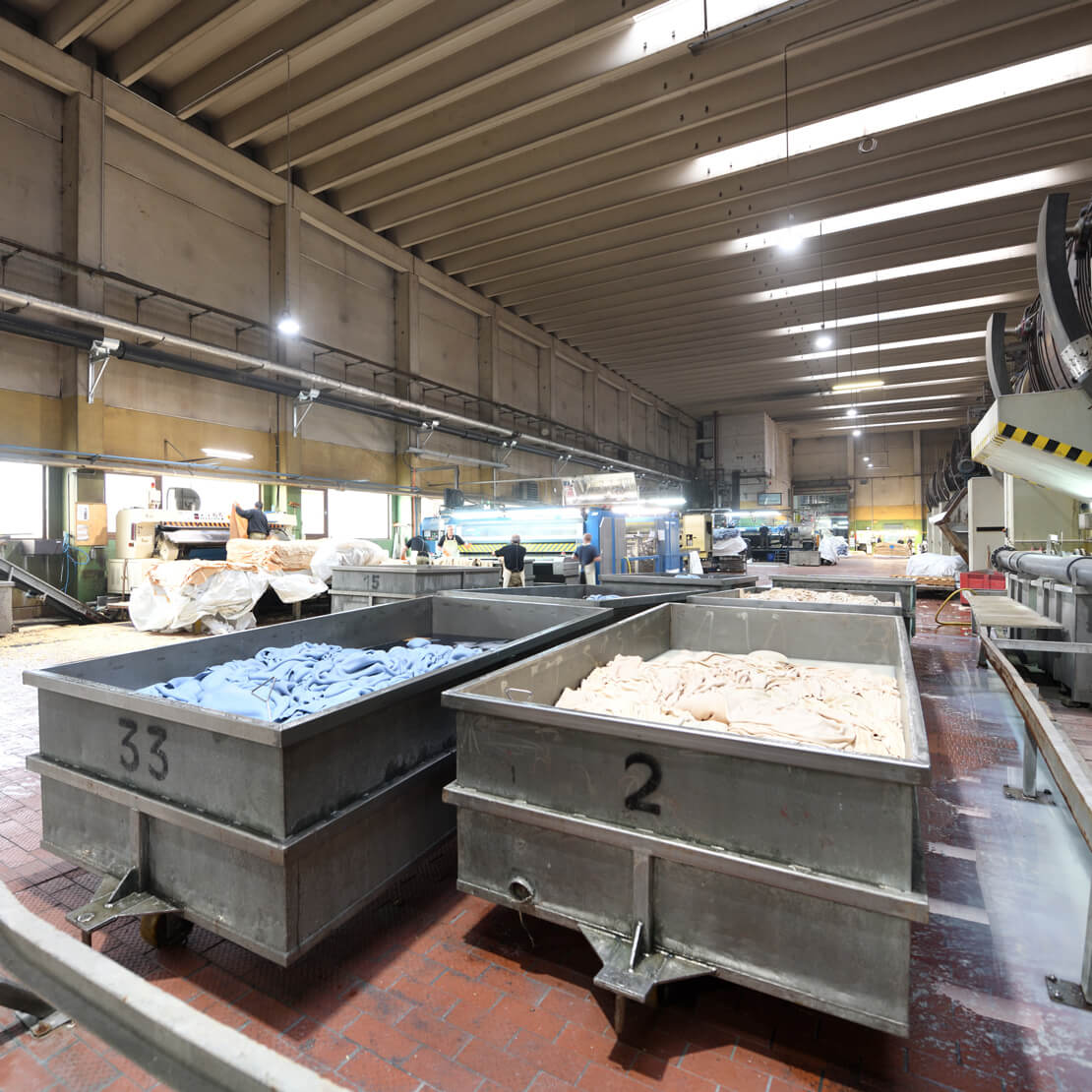
What is leather tanning?
It is a treatment of animal hides to prevent them from rotting before they are used in various fields. The hide is impregnated with chemical, vegetable or mineral substances. These substances are called tanning agents.
It is a chemical process that transforms animal hides into leather.
The resulting leather is resistant to water, heat and abrasion. It can be more or less flexible, depending on the method used. Each tannery uses different tanning agents to achieve different results.
This allows us to create the type of leather we want. The leather produced is used to make shoes and clothing.
After this step there are several steps before it can be used: dyeing, drying, stretching, softening, finishing.
But why do we need to tan hides?
The tanning process is essential to convert putrescible hides into usable leather. This process consists of impregnating the raw hide with chemical agents.
The animal from which the hide comes and the desired properties of the leather will influence the tanning process. This is why there are several types of tanning, which we will introduce to you.
Mineral tanning, the most common.
Mineral tanning is also called chrome tanning. Simply put, it is based on chromium III. It is the most widely used method of transforming hides into leather. It represents about 80% of the world leather production.
It appeared in the 19th century. In 1840, a patent was filed to protect this technique. This scientific discovery made it possible to tan hides faster, more efficiently, more versatile and less expensive. Indeed, this tanning process takes a few hours to a few days, depending on the leather required.
This discovery revolutionised tanning and helped it to develop. This sector became industrialized and developed. In the second half of the 19th century, the tanning industry hired and employed thousands of French workers.
It is a very technical process that requires know-how to prevent the leather from cracking after a few months of use. The chemicals are dangerous for the environment and the employees, who must be protected.
The main advantage of this type of tanning is that it is applied to fresh hides. These are the hides from the slaughterhouses. It can also be applied to so-called "pickled" hides.
These hides are soaked in vats filled with an acid solution and then in a brine which stabilises them. This soaking of the hides ensures their preservation and prepares them for tanning.
Chrome-tanned leather will not move. This means that the colour, even bright colours, will not change over time.
This tannage allows for high tensile strength and tear resistance. The combination of these two advantages is appreciated for the production of watch straps.
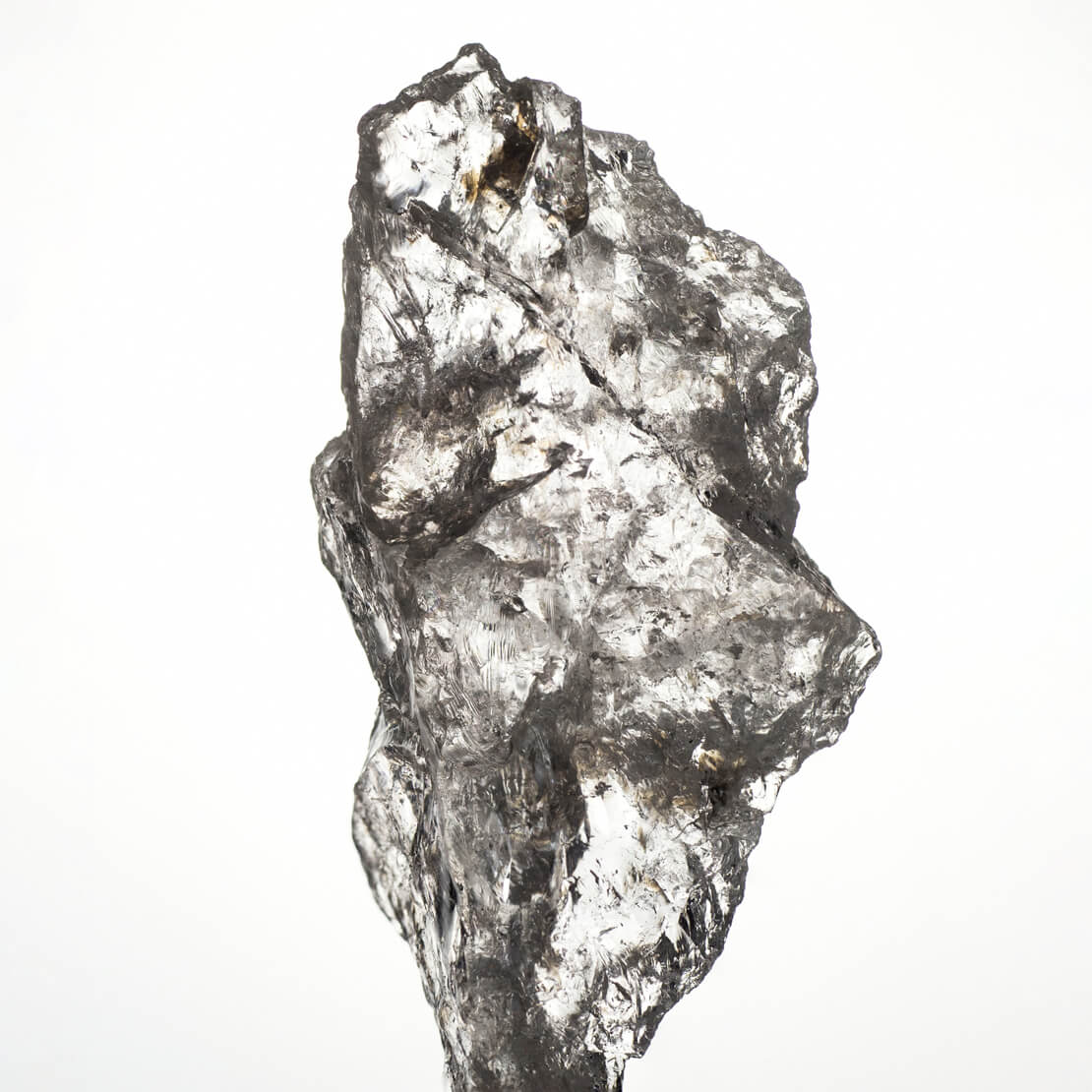
Vegetable tanning, the oldest in the world
This is the oldest method and requires the use of vegetable tannins. This tanning method still accounts for about 10% of production. Vegetable tannins can be very different: tree bark, leaves or roots. The trees used for vegetable tanning are often mimosa, chestnut, quebracho and oak.
The type of tannin used depends on the animal hides and the intended use of the resulting hides.
Vegetable tanning is carried out by soaking the hides in vats containing vegetable tannins. The soaking process lasts from a few days to several months, depending on the hides. Together with the other processing steps, the whole process can take from 3 months to 18 months for a very slow tanning. It is therefore a (very!) long process and therefore more expensive.
The result of vegetable tanning is a skin that is not very flexible. This skin is called "basane". It is often used to make leather soles or linings for shoes. It is also used in leather goods for shoulder straps and bag handles.
The advantage of this tanning is that it is very resistant to moisture. In addition, vegetable tanning is better for the planet, workers and consumers because it does not use chemicals.
The main disadvantage is that it is more sensitive to UV rays. In practice, this means that a 'white' leather can turn slightly beige or even yellow in sunlight.

Synthetic tannins
Little information is available on them. We know that they use aluminium or zirconium. This tanning allows to obtain very specific leathers. So not very common in the tanning industry.
In some cases, they are used to improve the current processes. However, they are not yet fully mastered, and much more expensive.
Friend or Enemy?
We have presented the different types of tanning. We need to clarify one last thing, the different types are compatible with each other. Several processes can be applied to obtain the leather for the upper of a shoe, for example.
The tanning process
After telling you about the history of tanning and the different types that exist, we will tell you about the tanning process. Several steps are necessary to obtain a finished leather. From obtaining the raw hide by the tanner to the leather sold to suppliers, several processes are necessary combining traditional know-how and modernity. The whole process can take several months depending on the characteristics required (suppleness, firmness, thickness, touch, etc.)
To begin with, the skins must be recovered after slaughter. It is necessary to act quickly because fresh skins are very fragile and degrade very quickly. They need to be salted to preserve them as long as possible before they are given to the tanner.
Did you know? The purchase of hides represents between 40 and 50% of the price of finished hides. The quality of the hides will influence the quality of the leather obtained.
The river work by the tanner
That's right, the hides are collected by the tanner. They come from the skinning and salting process. They must now be emptied of all the salt added for their preservation.
The hides are soaked in five times their weight in water and antiseptic is added. The antiseptic prevents putrefaction and degradation of the leather grain.
The hides are then prepared for tanning by preparing the hides for the other ingredients.
Leather tanning
This consists of transforming the skin into leather. For this, either mineral or vegetable tanning is carried out, or both in some cases. It is even possible to carry out synthetic tanning, but this is much rarer.
From this stage onwards, we no longer speak of skin but of leather.
Leather processing
Rope making is a combination of several actions and processes to bring the leather as close as possible to the final result.
In this part we will find the winding and the colouring.
The first step after tanning is the drying of the hides in the open air or in cylinders.
They become stiff as they dry. The tanner then proceeds to the mooding. That is, he moistens them again to soften them before proceeding with the trellising. The paddling allows the thickness of the leather to be reduced. The tanned skin is passed against rounded blades to slightly grate it.
Next, the future hides must be coloured. For chrome tanned hides, they are immersed in tanks containing water with acid dyes. For vegetable tanned hides, they are immersed in vats filled with dyes.
Several tests are necessary until the desired colour is obtained. Once the colour is obtained, the first steps described above are repeated.
Finally, the leather grain and the leather crust are separated. The grain leather is used for the upper, while the split leather is used in the manufacture of furniture, for example.
The finishing of the leather
Finishing is the last step that the leather undergoes before being used to make shoes or sofas.
The leathers are sorted again. The most beautiful leathers will not be sanded at all. The other leathers are sanded, the more important the defects are. The leathers go through the stages of full grain, corrected grain, crusted leather and even nubuck.
Depending on the desired appearance and texture, the leather will undergo :
- A satin finish or graining to give the leather texture
- Velveting on the grain to create a nubuck leather or on the flesh side to give velvet.
- A dry fulling to soften the leather
- Tying to amplify the grain aspect of the leather. Often used for grained leathers.
At the end you get textured leather croupons ready to be used.
Environmental impact
The leather industry has been trying for several years to reduce its environmental impact. This issue is vast and covers many areas: water use, cattle breeding, use of chemicals, etc. There is also the social aspect related to the working conditions of the employees in the tanneries.
Here we will discuss some of them.
Tanning uses chemicals as explained earlier in the article. In Europe, tanneries are subject to strict regulations on the use of chemicals. These regulations help to reduce the environmental problems associated with leather production, such as transport.
90% of the world's leather comes from cattle breeding. The reuse of hides after the slaughter of animals for their meat reduces its environmental impact. After all, animals are not only bred for their skins. This fact must, however, be qualified. It does not apply to exotic leathers such as reptile leathers.
Evolution of the leather industry
An evolution of the leather industry has been taking place every day for a few years with the research and development of vegetable leathers or faux leathers. As a reminder, faux leathers are vegetable leathers made from plant materials such as eucalyptus, pineapple, etc.
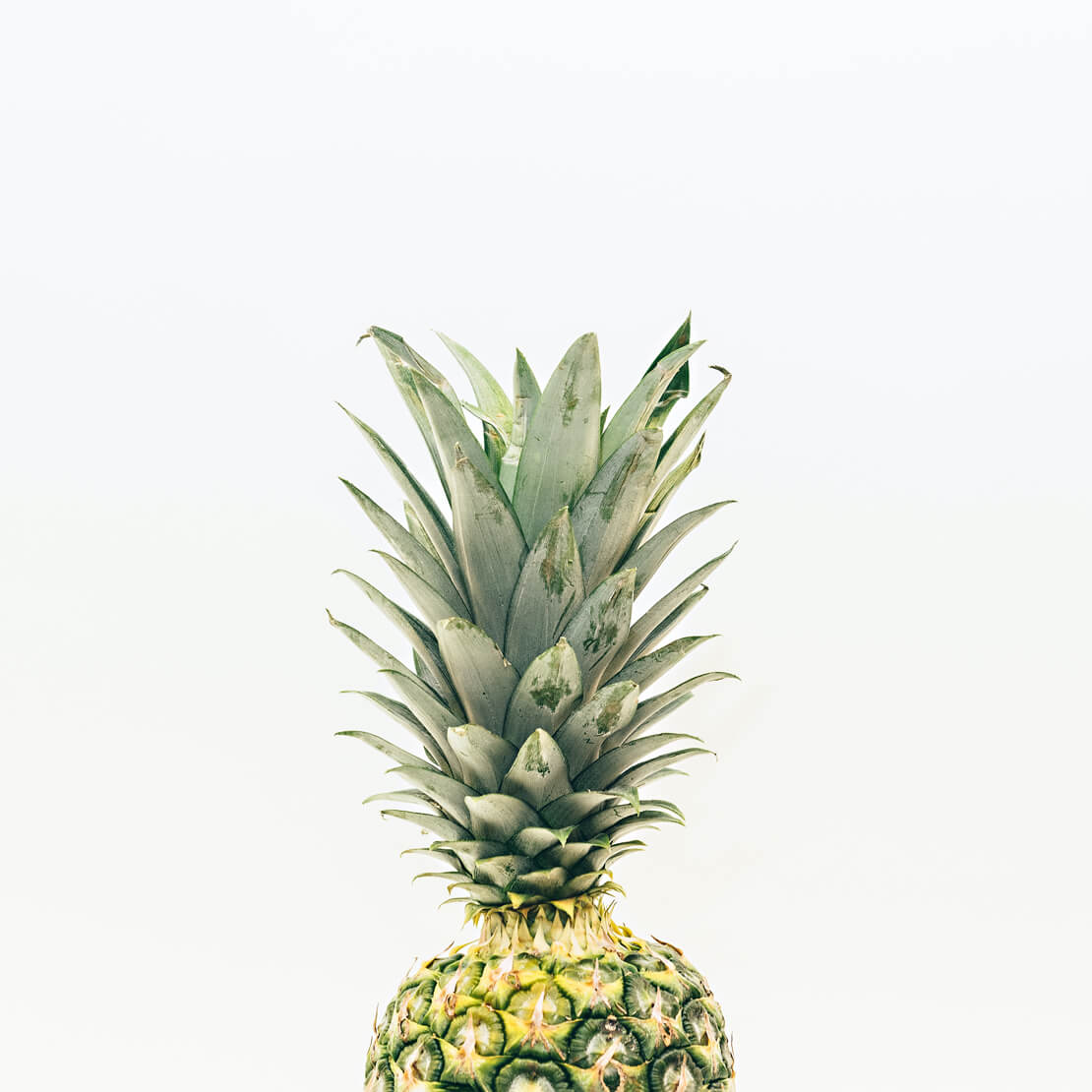
Labels in the leather industry
Alongside this innovation, labels are being created to control environmental impact. The OEKO-TEX® LEATHER STANDARD is a global certification system. It is independent and covers several aspects: legal production, lead use and production processes.
In order to limit the environmental problems associated with leather production, it is important to take care of your leather. That's why Monsieur Chaussure has been developing tutorials for 10 years on how to clean and care for your stuff.
Leather recycling
Environmental impact is also measured by the ability to be recycled. The recycling of leather is complicated whether it is vegetable or not.

